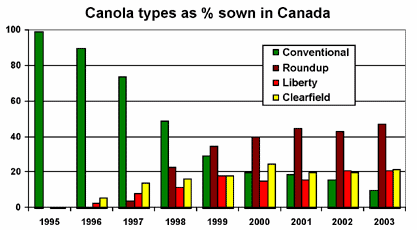Myths
& Metaphors of Private Law and Intellectual Property

Seminar
"Use
/ Usage"
Meaning and metaphor:
Associative thinking and the unacknowledged images of "use" in
intellectual property
The Oxford English dictionary defines a metaphor as follows: A
figure of speech in which a name or descriptive word or phrase is
transferred to an object or action different from, but analogous to,
that to which it is literally applicable; an instance of this, a
metaphorical expression.
Adopting this definition, when one refers to the subject matter of
copyrights and patents as "intellectual property",
one is speaking metaphorically. "Property" is a
particularly descriptive word,
even
for those who are legally trained and understand that property refers
to legal rights, not
things. Legal reasoning does not entirely displace the image
of property as object in one’s mind. What Sherwin
refers to as the associative cognitive style of image-based logic is
both present and pervasive, the unacknowledged silent partner of legal
argument. The linear thinking of legal reasoning
constructs the meaning of property as a legal relationship, what Lametti
defines as "a relationship between or among individuals
through objects of social wealth". The associative
thinking of image-based logic, however, constructs the meaning of
property in terms of the images that come to mind, such as the
proverbial Blackacre.
descriptive word,
even
for those who are legally trained and understand that property refers
to legal rights, not
things. Legal reasoning does not entirely displace the image
of property as object in one’s mind. What Sherwin
refers to as the associative cognitive style of image-based logic is
both present and pervasive, the unacknowledged silent partner of legal
argument. The linear thinking of legal reasoning
constructs the meaning of property as a legal relationship, what Lametti
defines as "a relationship between or among individuals
through objects of social wealth". The associative
thinking of image-based logic, however, constructs the meaning of
property in terms of the images that come to mind, such as the
proverbial Blackacre.
Sherwin argues that we must acknowledge
the presence and power of associative thinking in law. We are
in the midst of an exponential proliferation of images relative to
texts as sources of cultural meaning, including legal
meaning. Thus one cannot overlook the manner in
which the meaning of copyrights and patents is constructed through the
metaphor of property. Our print-based legal texts
are the source of the prevailing understanding of intellectual property
rights as negative rights of exclusion, as a market corrective for the
public goods problem of non-rival and non-exclusive knowledge
assets. But when copyrights and patents are referred to as
intellectual property, meaning is also constructed through the
descriptive power of the visual imagery of the metaphor.
Linear thinking about intellectual
property based on textual references is consistent with the
acknowledged public goods nature of the subject
matter. Faith in this mode of cognition, however,
as a familiar and exclusive source of legal meaning is at best a
consoling myth. Associative thinking need not be
acknowledged to have an influence on our beliefs and
practices. Furthermore, this cognitive style is faithful to
image, not text, hence the disruptive influence of the misplaced
metaphor of property. Image-based logic is a covert
operation, capable of constructing meaning just below the radar, so to
speak, of linear legal argument. Thus holders of intellectual
property rights, policy-makers and those responsible for dispute
resolution can in good faith profess fidelity to the characteristics of
intellectual property, even as they exercise rights, formulate policy
and resolve disputes in a manner that belies the presumptively shared
cultural understanding of knowledge assets as non-rival and
non-exclusive public goods.
One can see this in the language of use,
that is to say, in the way in which use of the
subject
matter of
copyrights and patents is characterized in ways that tend to substitute
characteristics
more appropriate to the subject matter of property.
When representatives of the motion picture and music industries refer
to unauthorized use as piracy, the language of the metaphor is perhaps
unintentionally revealing, a signal that the ostensibly shared cultural
meaning of knowledge assets as public goods is
unstable.
which use of the
subject
matter of
copyrights and patents is characterized in ways that tend to substitute
characteristics
more appropriate to the subject matter of property.
When representatives of the motion picture and music industries refer
to unauthorized use as piracy, the language of the metaphor is perhaps
unintentionally revealing, a signal that the ostensibly shared cultural
meaning of knowledge assets as public goods is
unstable.
 The
majority reasoning
of
the Supreme Court of Canada in the Monsanto
decision interprets
unauthorized use as interference with an entitlement to commercial
benefit, thus focusing on the market for actual canola seeds rather
than the subject matter of protection as disclosed in (and confined to)
the claims.
The
majority reasoning
of
the Supreme Court of Canada in the Monsanto
decision interprets
unauthorized use as interference with an entitlement to commercial
benefit, thus focusing on the market for actual canola seeds rather
than the subject matter of protection as disclosed in (and confined to)
the claims.

Arguably, digital rights
management is the most illustrative example of the influence of the
associate imagery of the property metaphor, an unconscious assertion of
"mine, all mine" that uses technology to eradicate
the non-rival and non-exclusive characteristics of knowledge assets.
One can only imagine how copyrights and
patents might be reconceived if other metaphors are adopted in place of
the associative imagery of property.
 For example, we might think of intellectual property in the same way as
an agricultural marketing board, with intellectual property law
functioning as the market intermediary. Intellectual property
law provides a guaranteed return on investment (an incentive) for
creators, and determines a fair price for consumers (as opposed to the
price being determined by the principles of supply and demand).
For example, we might think of intellectual property in the same way as
an agricultural marketing board, with intellectual property law
functioning as the market intermediary. Intellectual property
law provides a guaranteed return on investment (an incentive) for
creators, and determines a fair price for consumers (as opposed to the
price being determined by the principles of supply and demand).

Or we might think of intellectual property as a state corporation, such
as a public utility. Intellectual property law makes
decisions about the amount and distribution of knowledge assets based
on governmental policy as opposed to the price mechanism.

We
might even characterize intellectual property as a form of state
subsidy, similar to payments or preferential tax treatment granted to
private corporations. Subsidies are generally a response to a
systemic private sector funding gap in a particular industry or
geographical location. Intellectual property law fulfills a
similar function, providing the necessary supplemental financing to the
private sector to fund the production of knowledge assets.
Such metaphors are unlikely to take the
place of
"intellectual property" as a convenient and
inclusive phrase for referring to copyrights, patents and related
rights. But the use of the phrase itself is not so
much an issue as the unacknowledged process of associative thinking
that accompanies linear legal reasoning in this field. Once
we understand
the role of metaphor in constructing legal meaning, we
can start to identify the points of disconnect between our formal
understanding of intellectual property as public goods and our
unconscious tendencies towards reification.
Wendy
Ann Adams
descriptive word, even for those who are legally trained and understand that property refers to legal rights, not things. Legal reasoning does not entirely displace the image of property as object in one’s mind. What Sherwin refers to as the associative cognitive style of image-based logic is both present and pervasive, the unacknowledged silent partner of legal argument. The linear thinking of legal reasoning constructs the meaning of property as a legal relationship, what Lametti defines as "a relationship between or among individuals through objects of social wealth". The associative thinking of image-based logic, however, constructs the meaning of property in terms of the images that come to mind, such as the proverbial Blackacre.
which use of the subject matter of copyrights and patents is characterized in ways that tend to substitute characteristics more appropriate to the subject matter of property. When representatives of the motion picture and music industries refer to unauthorized use as piracy, the language of the metaphor is perhaps unintentionally revealing, a signal that the ostensibly shared cultural meaning of knowledge assets as public goods is unstable.
The majority reasoning of the Supreme Court of Canada in the Monsanto decision interprets unauthorized use as interference with an entitlement to commercial benefit, thus focusing on the market for actual canola seeds rather than the subject matter of protection as disclosed in (and confined to) the claims.
For example, we might think of intellectual property in the same way as an agricultural marketing board, with intellectual property law functioning as the market intermediary. Intellectual property law provides a guaranteed return on investment (an incentive) for creators, and determines a fair price for consumers (as opposed to the price being determined by the principles of supply and demand).



